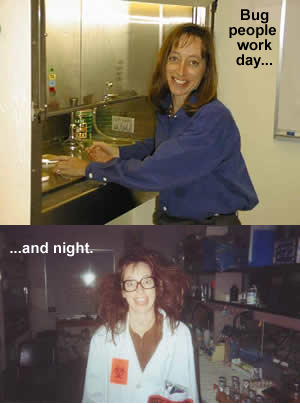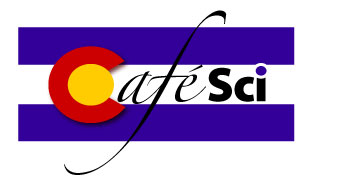|
Timberley initially fell in love with toxic waste and microorganisms while working at a sewage treatment plant in Davis, CA, as an undergraduate student at the University of California, Davis. When she realized that microorganisms alone can turn human sewage into clean water, she thought to herself “Bacteria can save the world!” and has since dedicated herself to the pursuit of “superbacteria” capable of degrading and detoxifying toxic waste. You find these, of course, in toxic waste, and the more toxic the better. It's been said that Timberley has never seen a seepage she didn't like. After receiving her Ph.D. from the University of Arizona, Soil, Water and Environmental Sciences program in 1999, Timberley is now an Assistant Professor in the Department of Biology at the University of Colorado at Denver and Health Sciences Center downtown campus. Her research focuses on the response of bacteria to toxic chemicals, such as heavy metals and pesticides. Working in exotic locations, including in acid mine pits, industrial waste streams, and, of course, sewage treatment plants, Timberley studies the bacteria that can detoxify chemicals in order to protect us and the environment. |

|
Microorganisms, including bacteria, fungi, algae, protozoa and viruses, are found everywhere and are feared everywhere. Yet, our very existence depends entirely on microorganisms, from those living in and on our bodies to those living in our food, soil and water. We can live without them no sooner than we could live without oxygen. But this relationship is precarious as some microorganisms can cause devastating diseases. And, in spite of our daily efforts to kill microorganisms, they continue to thrive, which is just as well since we need them to grow our food, make our medicines, and degrade our wastes. Then how do we come to terms with living with these organisms? For many, the goal is to kill as many as possible, to exclude them from our daily lives in order to prevent and control disease. The catch is this, as we strive to control microorganisms, we create stronger, more aggressive microorganisms that are harder to control. As we face a future of widespread antibiotic resistance, decreasing vaccine effectiveness and increasing spread of disease, is the solution to continue to try to control microorganisms? If so, we’ll lose the war. And, there is so much we have yet to learn about microorganisms. Much microbiology research focuses on disease-causing organisms, but what about the other 90-99% of microorganisms that we know nothing about? The fear of the unseen is strong, but we know so little about the microorganisms living in, with and around us that at what cost do we blindly try to kill them? For example, as our soils and waters become increasingly polluted, we’re killing bacteria responsible for fixing atmospheric nitrogen into a form supportive of plant and animal growth. Sufficient loss of these nitrogen-fixing bacteria is predicted to result in irreversible environmental damage and ecosystem collapse forever changing our quality of life. Given that the majority of known microorganisms are beneficial to us, what are we losing in our efforts to kill as many microorganisms as possible and can we afford the risk? Recommended resourcesDavid W. Wolfe. 2001. Tales from the Underground: A Natural History of Subterranean Life. Perseus Publishing, Cambridge, MA.
Above is the Berkeley Pit in Butte, Montana. An exhausted open-pit mine, it now contains almost 40 billion gallons of water (the level has risen 127 feet in 10 years) with a pH below 3, like your stomach. It's chock full of sulfuric acid, arsenic and other thrilling minerals and no one has a very good idea of what to do with it, or what will happen in the future. It's not very healthy for waterfowl, but some favorite Roane microorganisms are right at home there. [JJC photo, summer 2004, 7 shots taken with a paper camera, panorama assembled with PhotoStitch 3.1, converted to B&W to look scarier, tweaked shamelessly in CorelDraw.]
|


